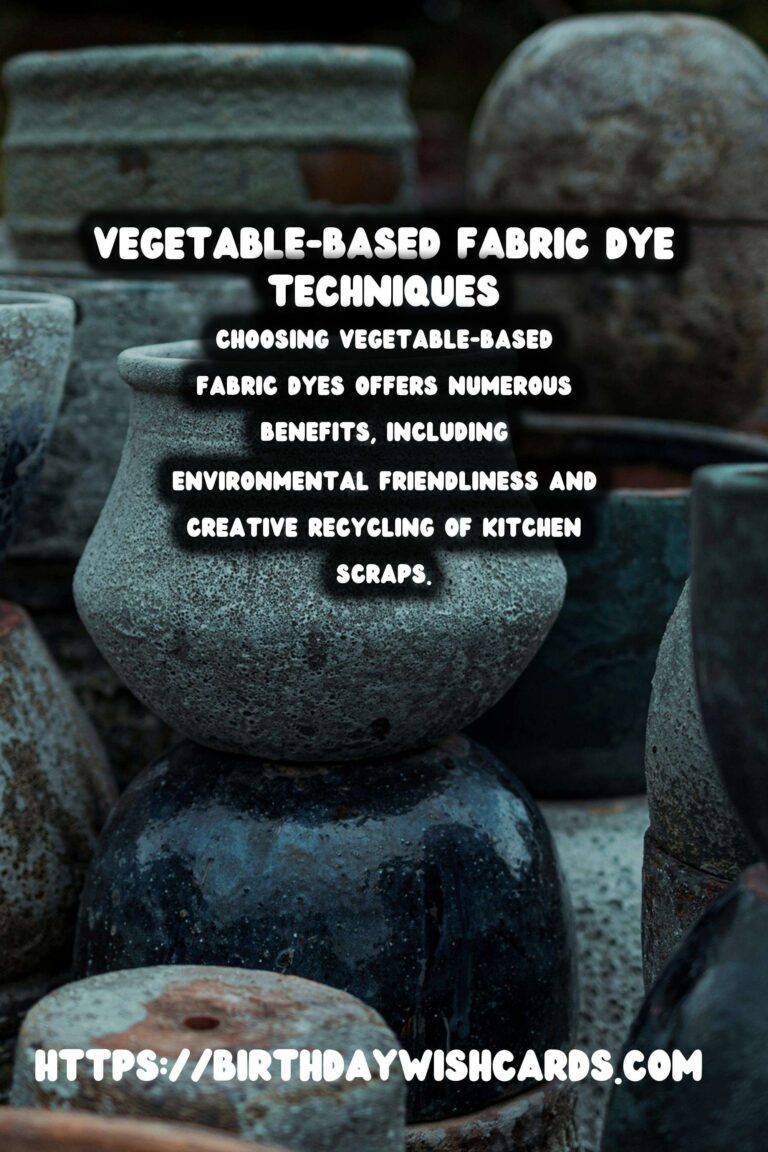
In recent years, there has been a growing interest in sustainable living and eco-friendly solutions. One such solution that has captured the attention of eco-conscious individuals is the use of homemade natural fabric dyes. These dyes, often derived from vegetables, offer a vibrant, non-toxic alternative to conventional synthetic dyes.
Why Choose Vegetable-Based Fabric Dyes?
Choosing vegetable-based fabric dyes offers numerous benefits. Firstly, they are environmentally friendly and reduce the chemical waste associated with synthetic dyes. Additionally, they provide a fun, creative way to repurpose kitchen scraps and leftovers. This not only minimizes waste but also adds a personal touch to your fabrics.
Common Vegetables Used for Fabric Dyeing
Various vegetables can be used to create natural dyes, each offering a unique color palette. Some popular choices include:
- Beets: Known for their deep red pigments, beets are excellent for creating shades of pink and red.
- Red Cabbage: This versatile vegetable can produce a range of colors from blue to purple, depending on the pH of the dye bath.
- Onion Skins: A great source of yellow and orange hues, onion skins are often used for their rich, earthy tones.
- Carrots: Perfect for creating soft, pastel oranges.
How to Prepare Natural Fabric Dye
The process of preparing natural fabric dye is straightforward and requires minimal equipment. Here’s a simple guide to get you started:
- Gather Your Vegetables: Collect the necessary vegetables and chop them into small pieces to increase the surface area for dye extraction.
- Boil the Vegetables: Place the chopped vegetables in a large pot and add enough water to cover them. Bring the mixture to a boil, then reduce the heat and simmer for about an hour.
- Strain the Dye: Use a strainer or cheesecloth to separate the liquid dye from the vegetable solids. The resulting liquid is your dye.
- Prepare the Fabric: Before dyeing, soak the fabric in a fixative solution to help the dye adhere better. A salt fixative works for berry dyes, while a vinegar fixative is suitable for other plant dyes.
- Dye the Fabric: Submerge the fabric in the dye bath, allowing it to soak until the desired color is achieved. This can take anywhere from a few minutes to several hours.
Tips for Successful Natural Dyeing
To ensure successful dyeing, keep the following tips in mind:
- Use natural fibers such as cotton, wool, or silk, as they absorb dyes more effectively than synthetic fabrics.
- Experiment with different vegetable combinations to create unique colors and patterns.
- Keep records of your dyeing process to replicate successful results in the future.
Conclusion
Homemade natural fabric dyes offer a sustainable, creative way to breathe new life into textiles. By using vegetable-based dyes, you can reduce your environmental footprint while enjoying the art of dyeing. Whether you’re looking to revamp an old t-shirt or create a custom fabric piece, these techniques provide endless possibilities for artistic expression.
Homemade natural fabric dyes, derived from vegetables, offer a vibrant, non-toxic alternative to conventional synthetic dyes. Choosing vegetable-based fabric dyes offers numerous benefits, including environmental friendliness and creative recycling of kitchen scraps. Various vegetables like beets, red cabbage, and onion skins can be used to create unique color palettes. The process of preparing natural fabric dye is straightforward and requires minimal equipment. Homemade natural fabric dyes offer a sustainable, creative way to breathe new life into textiles. 
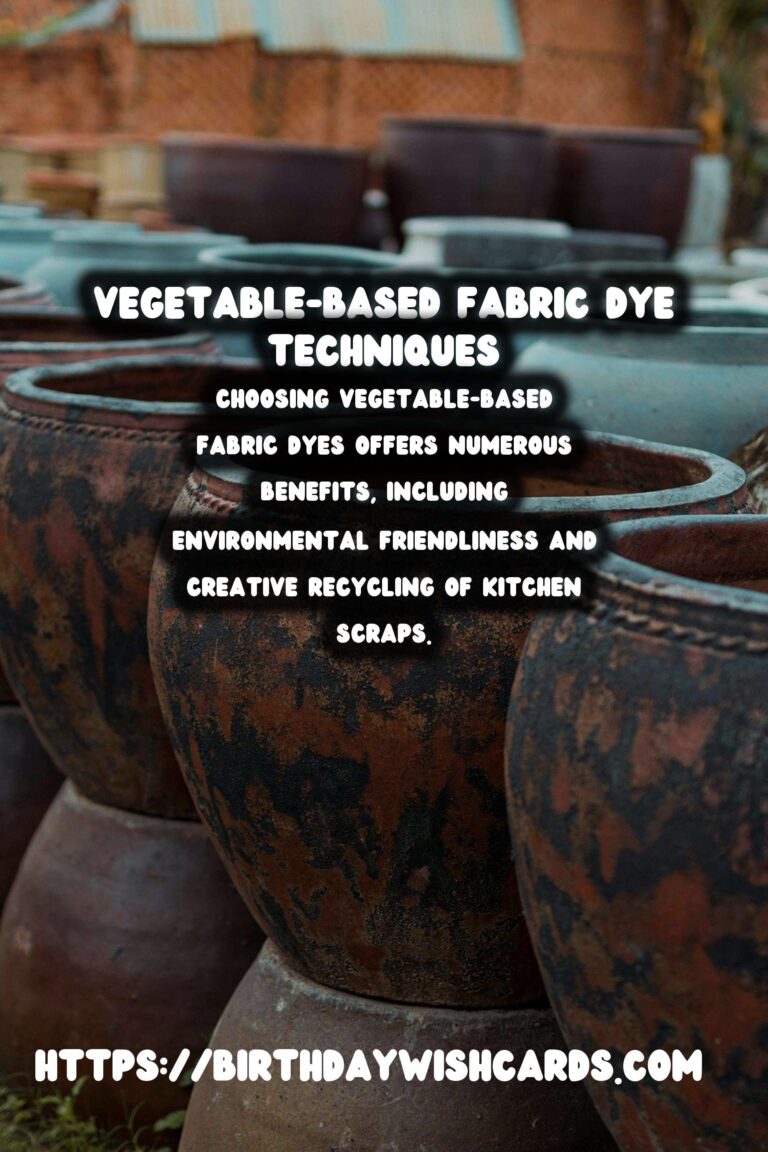
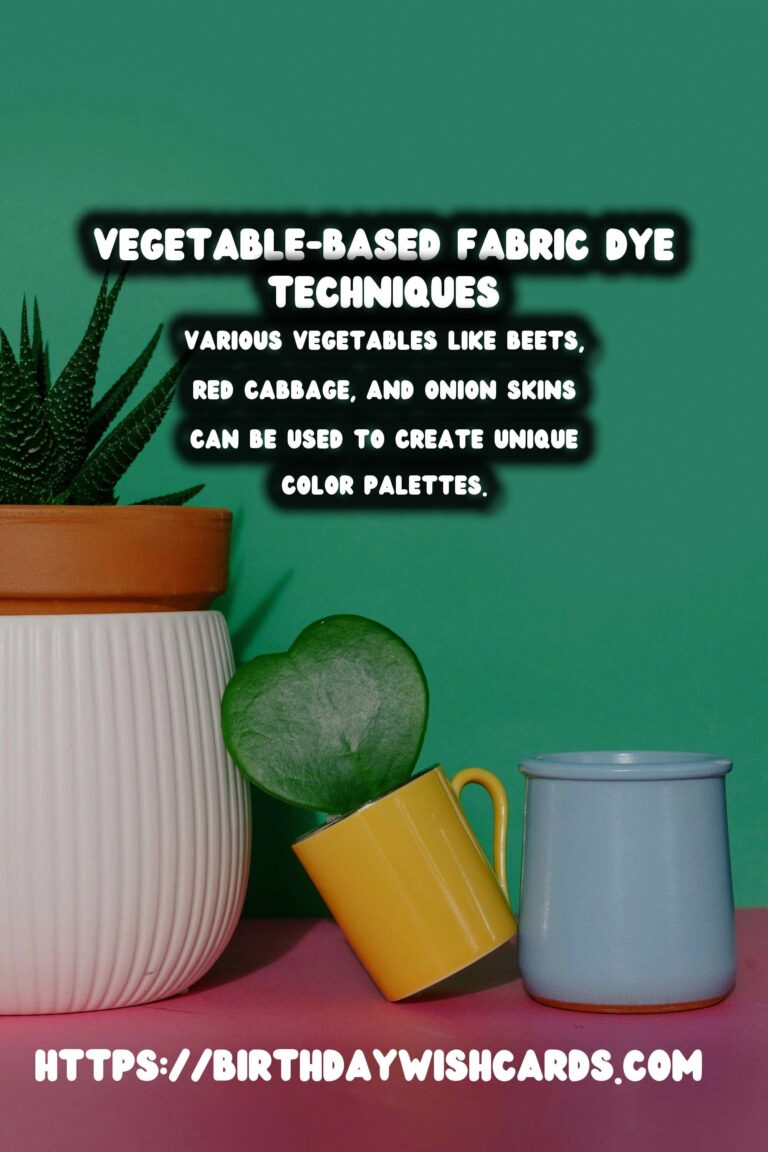

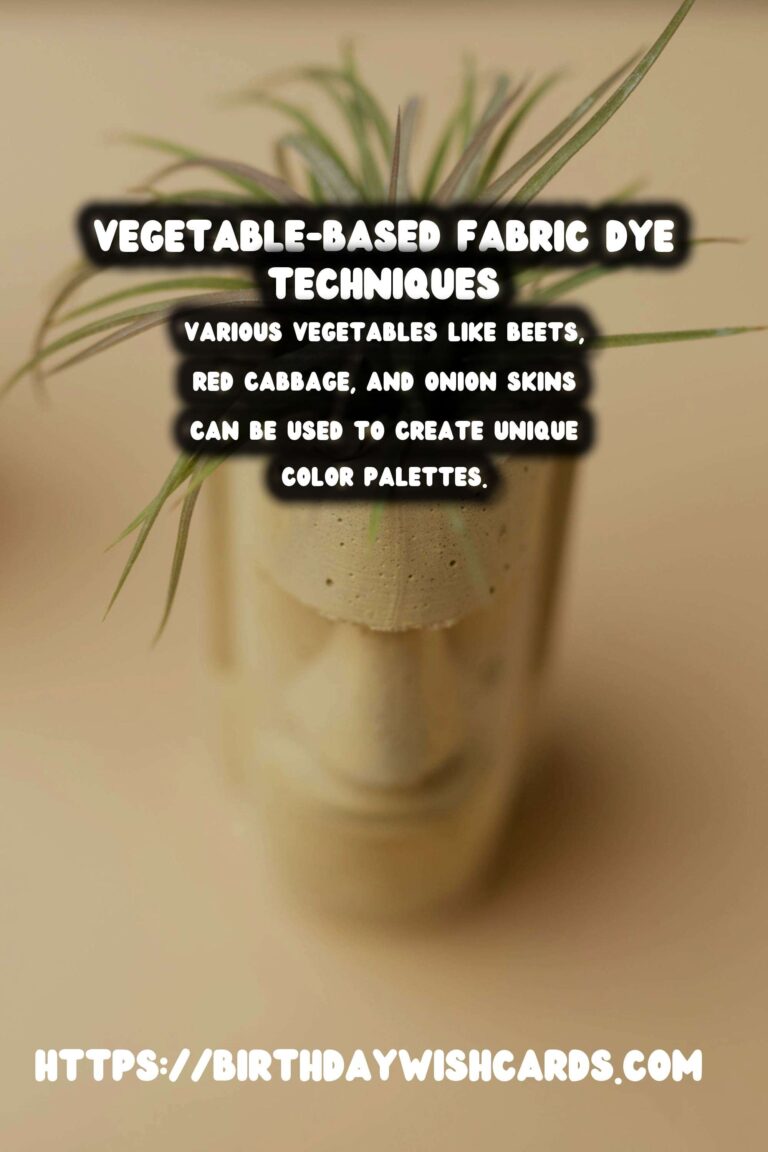
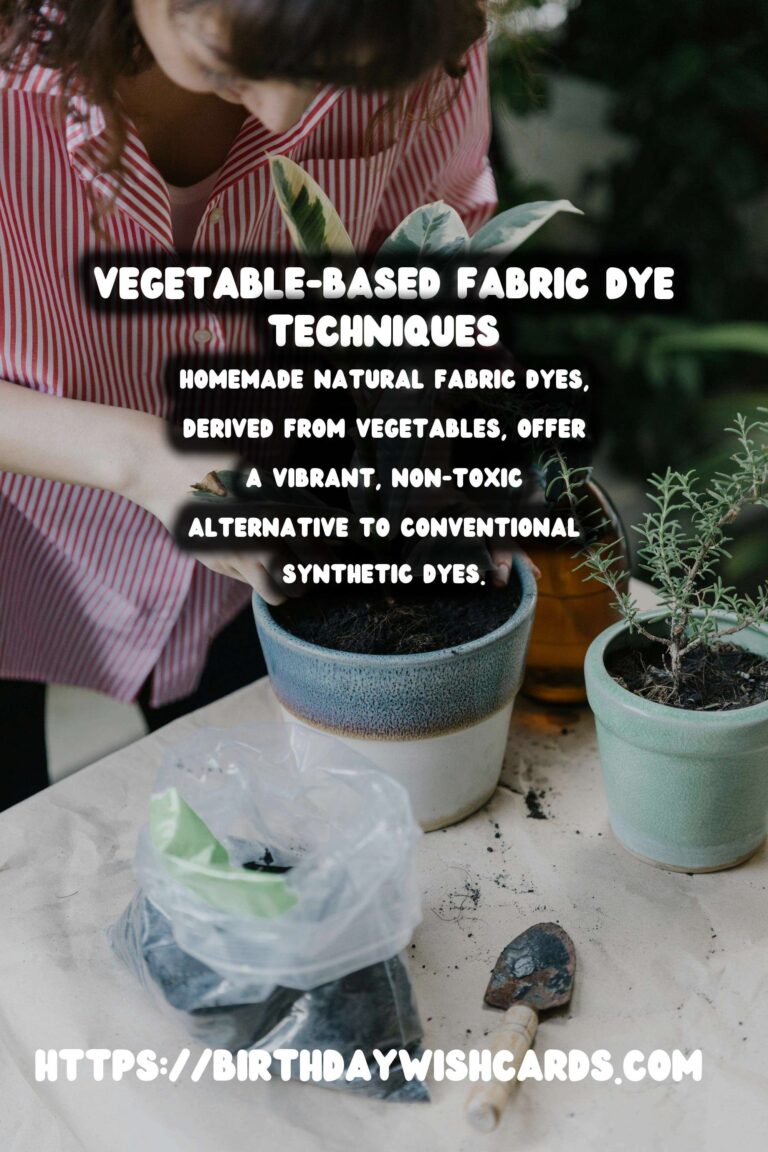
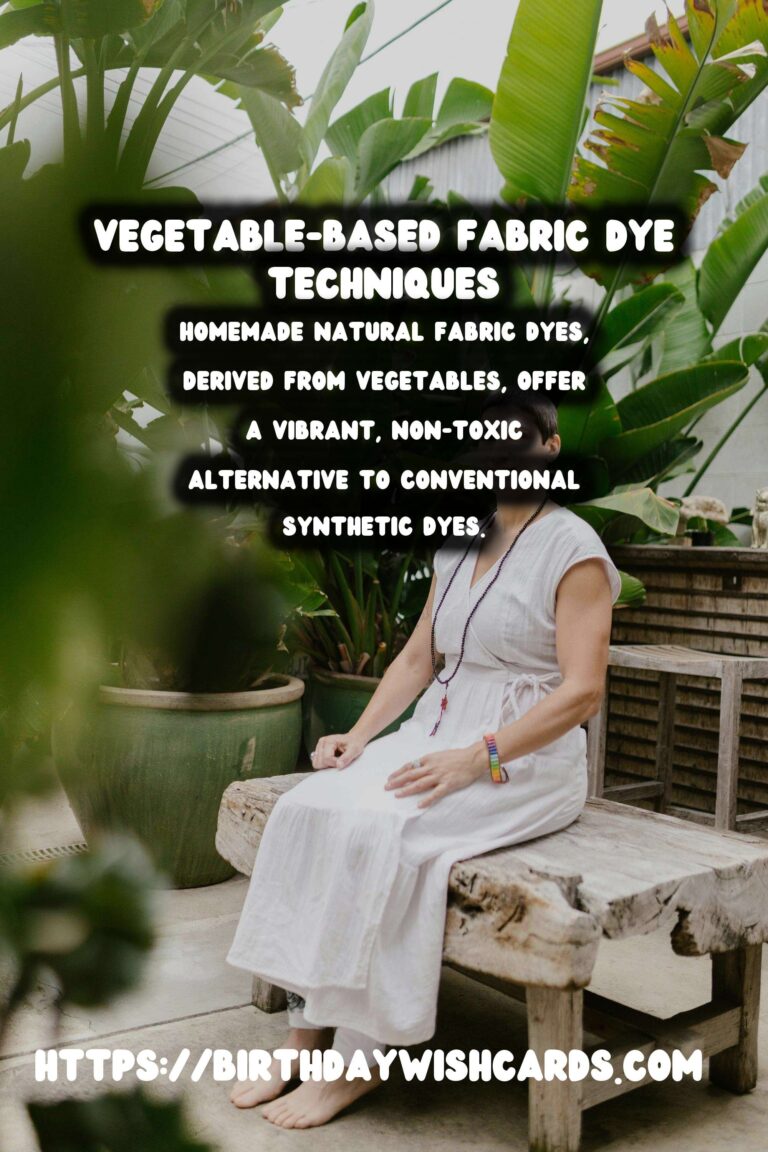
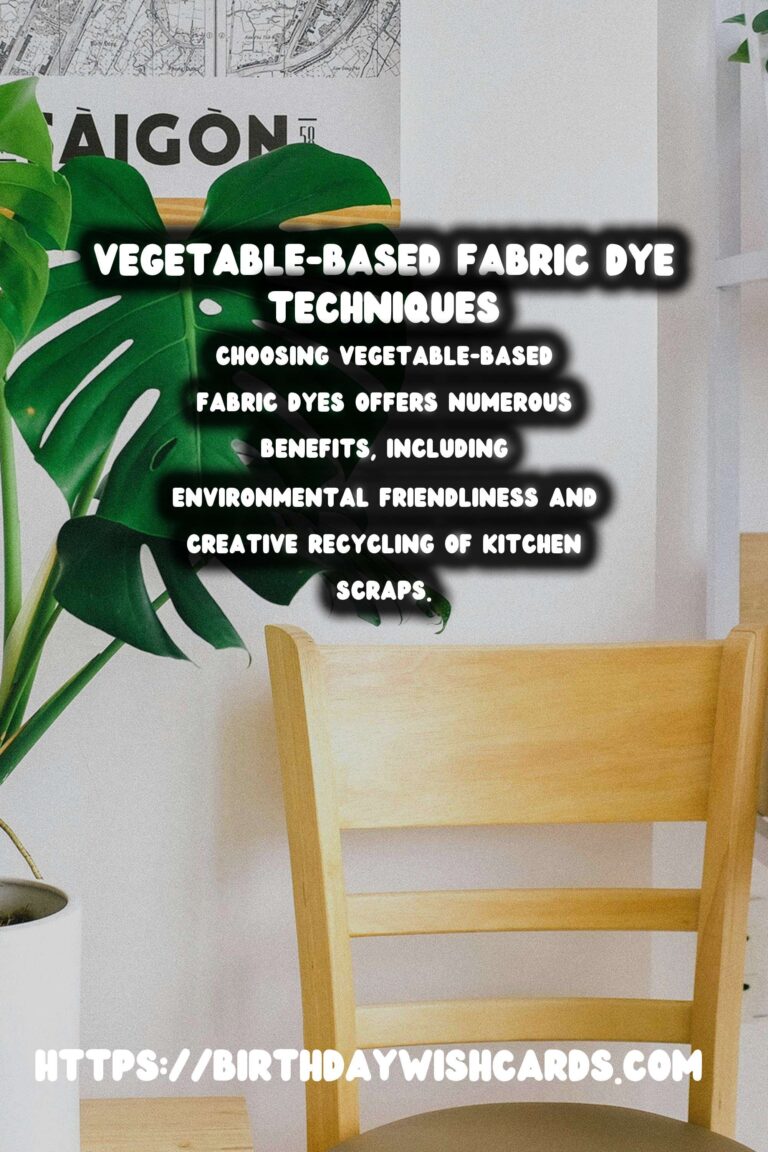
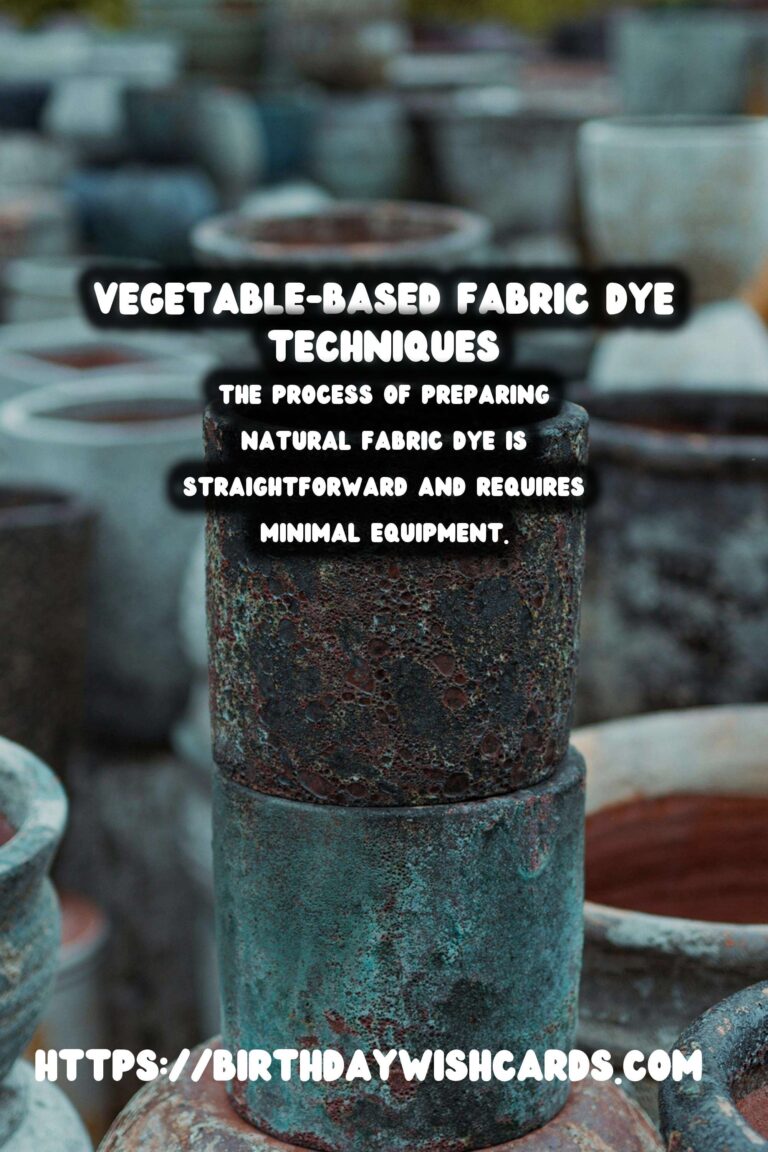
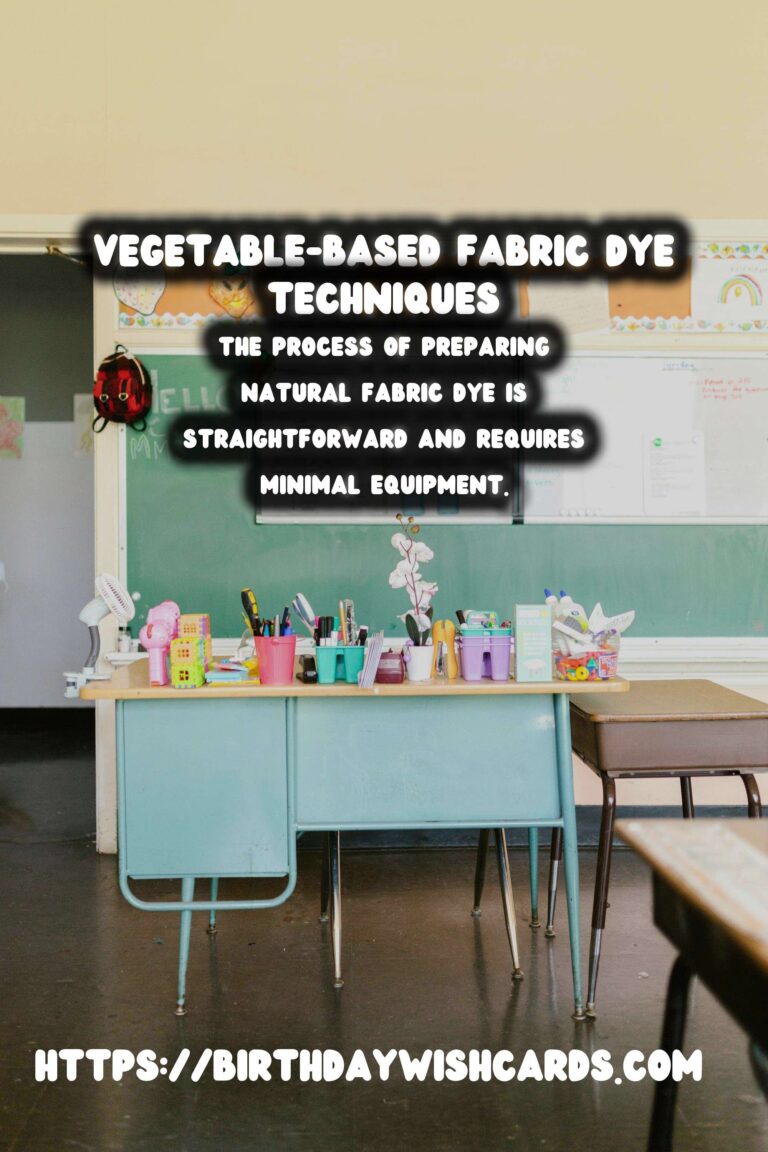
#NaturalDyes #EcoFriendly #FabricDyeing #SustainableLiving #DIYCrafts




